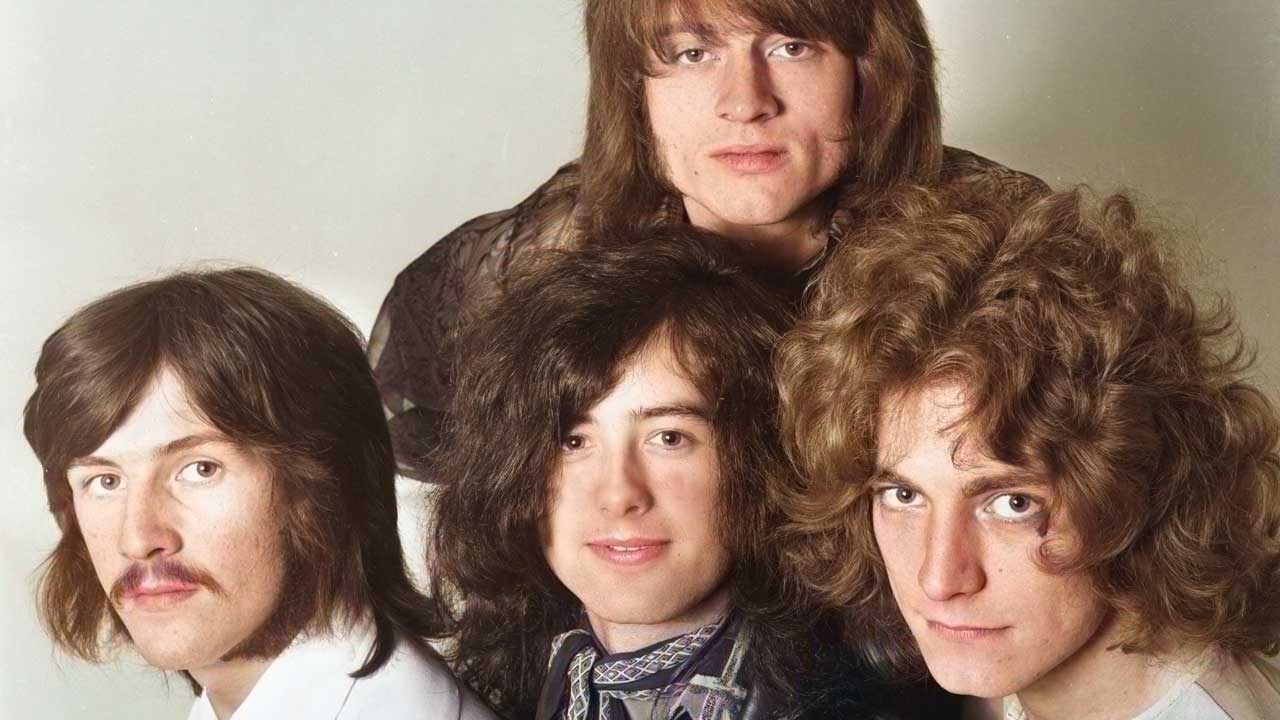
As the rain lashed down on a typically depressing summer night in Luton an era sputtered anticlimactically to its inevitable conclusion. It was July 7, 1968 and the local College of Technology was playing host to the death-rattling demise of a band once revered as the very pinnacle of Transatlantic Britpop cool, but who were now stumbling half-heartedly to the close of their shared career in relatively reduced circumstances.
As lead vocalist Keith Relf mumbled through the motions of yet another anonymous performance (habitually shaking his blond Brian Jones bangs and studiously applying his larynx to the wailing of the occasional two-year-old crowd-pleasing hit), The Yardbirds’ newest recruit and sole heir apparent to their original spirit of brave experimentation, injected a moment of rare, spine-tingling dynamism into the largely lacklustre performance.
Midway through a new song entitled Dazed And Confused, rookie guitarist Jimmy Page produced a violin bow that he proceeded to viciously employ on the strings of his over-cranked Fender Telecaster. It was a gob-smacking gimmick, shamelessly misappropriated from Eddie Phillips of The Creation, but – plagiarism aside – it represented a tantalising glimpse into rock’s future. For with this single flamboyant gesture, Page was sweeping aside the studious purism of mid-60s blues austerity and flinging open the door to the grandiose gestures and limitless possibilities of titanic 1970s mega-rock.
In short, Jimmy Page was in the process of creating a monster; a monster that was to become known the world over as Led Zeppelin.
In their heyday, The Yardbirds had been one of the most sought-after and innovative bands to have emerged from the UK’s all-pervasive, early 60s R&B boom. The band’s ascendance to the embryonic rock scene’s front rank meanwhile, was nothing short of meteoric.
In 1963 they inherited a plum residency at legendary blues impresario Giorgio Gomelsky’s unfeasibly hip Crawdaddy club from the departing-for-greatness Rolling Stones. Shortly afterwards The Yardbirds original lead guitarist, a man named Top Topham, was replaced by a nimble-fingered 18-year-old fretboard prodigy by the name of Eric ‘Slowhand’ Clapton.
The new-look line-up (completed by bassist Paul Samwell-Smith, guitarist Chris Dreja and drummer Jim McCarty) immediately seduced the media and blues purists alike with the dazzling digital dexterity that sizzled from the grooves of Five Live Yardbirds (a stunning live collection from London’s Marquee). But, as they prepared to consolidate their cult success by making a frontal assault on the rich rewards of the pop market, Clapton baulked at the prospect of jeopardising his spotless 12-bar credentials and departed for the fireproof authenticity of John Mayall’s Bluesbreakers.
Undaunted, The Yardbirds (now boasting ex-Tridents fretboard innovator Jeff Beck in their ranks) casually conquered the dizzy heights of the international pop mainstream in fine and accomplished style.
In the year prior to March 1966, the Beck-era Yardbirds enjoyed no less than four top three UK hit singles (For Your Love, Heart Full of Soul, Evil Hearted You and Shape of Things) while, in the USA, an entire generation of hardcore, Anglophile garage bands endeavoured manfully to replicate their singularly visceral chops.
Ironically, in June ’66 (when Samwell-Smith left to be a producer, Dreja switched to bass and boy wonder Page finally squeezed into the picture) The Yardbirds’ fortunes took an almost instantaneous turn for the worse: Over Under Sideways Down stalled at a relatively disappointing number ten, before Happenings Ten Years Time Ago stiffed like an utter lemon at a truly embarrassing 43.
By now, Jeff Beck had flown the coop – following an on-road freak-out – leaving Page to struggle his weary way to Luton in ’68 at the helm of a steadily disintegrating, largely directionless and wholly dispirited quartet. Following their College of Technology swansong, Keith Relf and Jim McCarty departed in order to form the acoustic duo Together (which later metamorphosed into Renaissance) leaving Page and Dreja with a handful of outstanding contractual commitments to fulfil. Obviously, a completely clean break would have been preferable, but Jimmy Page was undaunted by the prospect of putting together a ‘New’ Yardbirds line-up.
After all, even at the relatively tender age of 24, he was already a seasoned pro.

James Patrick Page was born on January 9, 1944 in the North of London suburb of Heston, Middlesex and first exhibited an uncommon aptitude for guitar playing during his early teens, having been inspired to take up the instrument by such largely unsung, though incalculably influential, rock’n’roll sidemen as Scotty Moore (Elvis Presley), James Burton (Ricky Nelson) and Johnny Day (The Everly Brothers).
Keen to expand his frame of reference, Page gravitated toward the blues and the music of Elmore James and BB King. Upon leaving school Page gained his first on-road touring spurs backing up beat poet Royston Ellis.
Soon enough, Jimmy progressed to his first proper bands – Red E Lewis and The Red Caps, followed swiftly by Neil Christian and The Crusaders – but following repeated bouts of glandular fever, Page decided upon a temporary hiatus from the road and spent a jazz-fuelled year of academic recuperation at Sutton Art College.
Like a myriad of like-minded contemporaries, Page was drawn towards London’s burgeoning jazz and blues circuit, where such scene-leaders as Alexis Korner’s Blues Incorporated and the Cyril Davis All Stars were acting as mentors and offering encouragement to a host of nascent rock stars from Mick Jagger to Ginger Baker. Before too long, in true Hollywood cornball style, Page was ‘discovered’ whilst playing an impromptu interval guest spot at the Marquee, and invited to do some session work for Decca Records.
Page toyed briefly with the notion of operating within the confines of a band, but soon discovered the seemingly limitless goldmine potential of being a hip, young, guitar-slinging virtuoso on the wild frontier of the UK’s emergent beat boom. Consequently, both Mickey Finn and Carter Lewis and The Southerners fell by the wayside, as the in-demand Page accepted countless commissions to add his characteristic professional sheen to recordings by artists as diverse as Burt Bacharach, The Who, Val Doonican, Them, Nico, Tom Jones, Lulu and The Kinks.
This unique combination of scope-broadening musical eclecticism and limitless access to cutting-edge recording equipment provided Page with a priceless apprenticeship in all aspects of studio craft. Consequently, in addition to honing his fretboard skills to scalpel sharpness, Page also attained a level of mixing desk mastery that led to him being recruited as the house producer for Svengali-esque Rolling Stones manager Andrew Loog Oldham’s newly-formed Immediate label in 1965.
It was also around this time that Jimmy Page turned down an initial offer to join The Yardbirds while, most generously, recommending fellow guitar whizz Jeff Beck for the gig. But following a further year on the unrelenting session treadmill, Page was finally ready to commit to a single outlet for his unique talents and, following a second invitation, injected a much-needed shot of refreshingly libertine, psychedelic experimentation into an increasingly stale Yardbirds line-up that was gradually meandering off the boil.
In spite of the fact that The Yardbirds’ UK hits were steadily drying up, the American college circuit was warming to the Page-infused quintet’s blues-based, psychedelic stylings, having detected an artistic congruence with the flower-powered acid rock that was presently emanating from San Francisco. It was a market that both Page and the Yardbirds’ larger-than-life new manager Peter Grant were absolutely insistent on exploiting.
“When I started managing The Yardbirds,” said Grant later, “They weren’t getting the hit singles, but were on the college circuit and underground scene in America. Instead of trying to get played on Top 40 radio, I realised there was another market. We were the first UK act to get booked at places like The Fillmore. The scene was changing.”
But the change came way too quickly for some, and a gruelling US tour saw Jeff Beck quit the band. The remaining quartet’s ill-starred hook-up with the overly commercial-minded Mickie Most, meanwhile, was an utter unmitigated disaster. The resultant Little Games album was even denied a contemporary UK release – a final humiliation that left The Yardbirds’ position untenable.
“I tried desperately to keep it together,” remembers Page of the band’s difficult final days. “The group were ahead of their time and I was never ashamed of playing with The Yardbirds. I thought we had some great ideas going and I wanted to carry that on.”
But The Yardbirds’ increasingly rocky road led inexorably to Luton, and if the band were to have any future whatsoever, it would have to be in a drastically altered state.
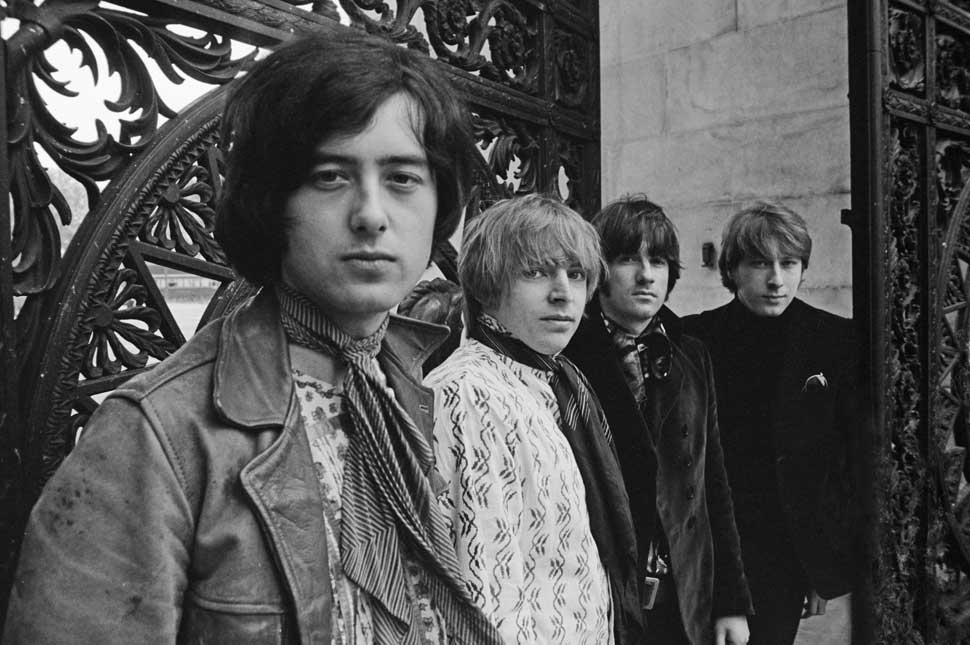
As a decidedly dazed and confused Jimmy Page and Chris Dreja staggered from the wreckage of Keith Relf and Jim McCarty’s Luton college bombshell, they were not only left with the rights to the Yardbirds’ name, but also the responsibility to fulfil a handful of outstanding dates in Scandinavia.
This meant that they needed to put together a new functioning Yardbirds line-up with all due haste. Clearly, this would necessitate some hardcore hustling and, as luck would have it, they had just the man who could do it.
Peter Grant was the living, breathing embodiment of the new wave of ruthless, hard-nosed rock managers that followed in the wake of such perpetually shaded, business-minded hipster malchicks as Andrew Oldham.
Grant – born illegitimate into working class South London stock – was an imposing bear of a man whose colourful CV boasted stints as a professional wrestler, body double for Robert Morley and bouncer at Soho’s legendary 2i’s Coffee Bar. He’d stumbled into rock management while working as chauffeur to the similarly intimidating management heavyweight Don Arden who – recognising Grant’s untapped potential for bellowing recalcitrant promoters into quivering jelly – left such visiting veteran rockers as Little Richard and Gene Vincent in Grant’s capable, handshake-crushing fists.
Before too long, Grant took sole charge of Geoff Stephens’ novelty act The New Vaudeville Band (who enjoyed a brace of top ten hits with Winchester Cathedral and Peek-A-Boo in the mid-60s), before graduating onto The Yardbirds.
The seeds of the new Yardbirds had been sown way back in May 1966, when prior to finally accepting The Yardbirds’ second offer of employment, Jimmy Page had been called in to work on a solo session with Jeff Beck. The song in question, recorded at IBC Studios, was an Iberian-tinged instrumental entitled Beck’s Bolero that not only featured Beck and Page on duelling guitars, but also The Who’s Keith Moon on drums, seasoned sessioneer Nicky Hopkins on keyboards and one John Baldwin, a much sought-after session stalwart and musical director better known to posterity as John Paul Jones, on bass.
John Baldwin was born in Sidcup, Kent on January 3, 1946 and from an early age he accompanied his parents, a variety-styled double act, as they courageously trod the nation’s boards. Following an onstage baptism of fire, hammering the keys in a dance band around the country’s US military bases, John switched from piano to bass and joined ex-Shadows duo Jet Harris and Tony Meehan in 1963. Cliff’s former toe-tappers had recently enjoyed an instrumental UK number one hit single with Diamonds, which had, almost inevitably, featured the wholly ubiquitous chops of Jimmy Page.
The highly paid allure of serial session work similarly captured the imagination – and indeed business acumen – of the ambitious young multi-instrumentalist and string arranger. He went on to apply his not insubstantial talents to hit releases by Herman’s Hermits, Dusty Springfield and even the Rolling Stones. In fact, it was the aforementioned Andrew Loog Oldham that was ultimately responsible for John Baldwin’s metamorphosis into John Paul Jones: “He said ‘You need a stage-name,’” remembers Jones, “saw the name on a French film poster and said ‘Hey, that would look good in widescreen!’”
Following Beck’s Bolero, the central protagonists were so inspired by the internal chemistry at work within the unit that they even considered forming a full-time band.
Keith Moon was temporarily disillusioned with The Who, but the search for a lead singer who was both appropriate and available proved fruitless. Stevie Winwood, still lending his talents to the Spencer Davis Group prior to forming Traffic, was rumoured to be in the frame for a while, but the ideal candidate for the frontman job was clearly the Small Faces’ Steve Marriott: a man possessed of a quite remarkable blues wail. Check out the Small Faces’ You Need Love – not only taken from the same Willie Dixon root as, but also an obvious stylistic precursor to, Led Zeppelin’s Whole Lotta Love – recorded in March ’66, and is available on their BBC Sessions album, to hear a truly tantalising approximation of what might have been. But Marriott was unavailable. Quite incredibly unavailable, in fact.
When word spread of Page’s intention to approach Marriott for the gig, the Small Faces’ imposing manager – the aforementioned Don Arden – had a well-chosen word or two to say on the subject.
“We did try to get Marriott,” recalls Page, “but a message came back from the management which basically said ‘How would you like to play guitar with broken fingers?’ So after that, the idea fell apart, and we just let it slip by.”
All concerned ultimately returned to their day jobs: Moon to The Who; Beck to The Yardbirds; Jones, Page and Hopkins to sessions, while Beck’s Bolero eventually turned up on the B-side of Jeff Beck’s evergreen millstone solo hit, 1967’s Hi Ho Silver Lining. But the most enduring legacy of the stillborn combo came from an offhand comment made by Keith Moon, who mused that the band would probably go down like a lead balloon, a lead Zeppelin even. All agreed that this particular moniker would be an absolutely perfect name for a band. Jimmy Page meanwhile, never averse to hijacking a good idea, filed it away for later.
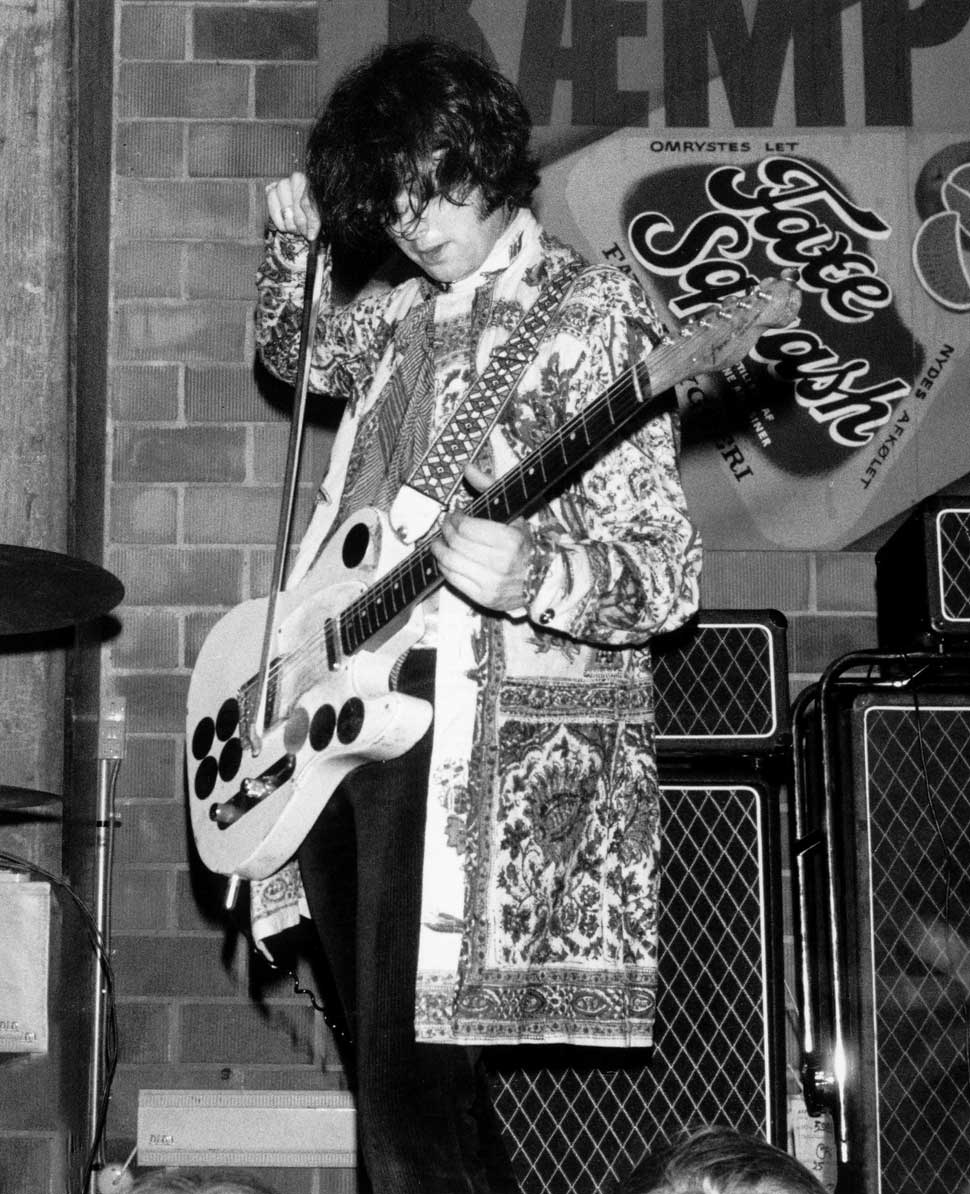
When Scandinavian live commitments necessitated the swift recruitment of a new Yardbirds line-up in July 1968, surviving bass player Chris Dreja retained his enthusiasm for the band, and was keen to remain involved, but Page and Peter Grant were faced with the daunting prospect of signing up not only a drummer, but also a compelling frontman.
Names in the percussive frame included Procol Harum’s BJ Wilson (Page’s first choice, who ultimately refused an offer of employment), the little known Paul Francis and Clem Cattini – formerly of the Tornadoes, and latterly a familiar face on the session circuit – but auditions remained frustratingly fruitless.
On the vocalist front meanwhile, Page toyed briefly with the notion of making further overtures to Steve Winwood and Steve Marriott, but with Winwood now happily ensconced in Traffic and with Page’s fondness for unbroken fingers persisting, other contenders were duly sought. An offer from the pre-Mott The Hoople Ian Hunter was politely fielded, as Page turned his attentions to former Peter Jay and The Jaywalkers singer, Terry Reid.
Reid had other plans however – he’d just signed up with Mickie Most and had his sights firmly set on solo stardom. The Huntingdon-born vocalist did enjoy a moderate degree of success, largely in America where he toured extensively with Cream, but will always be far better known as the man that turned down Led Zeppelin. “I’d just settled a deal with Mickie Most,” Reid would later reflect, “and it was just a case of not being available.”
In rebuffing Page’s offer however, Reid advised the guitarist to check out a young, Black Country blues wailer by the name of Robert Plant.
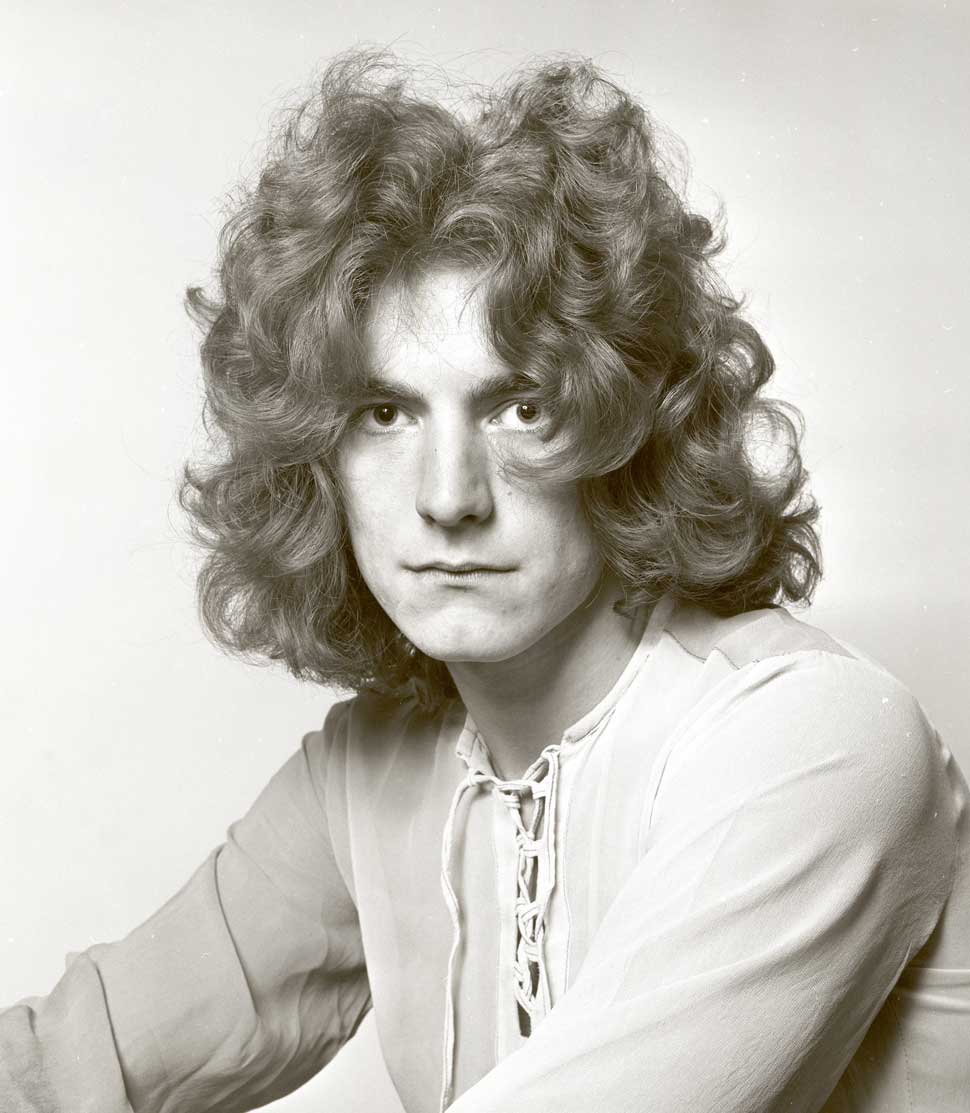
Robert Plant was born in West Bromwich on August 20, 1948. Shortly after leaving school the aspiring vocalist elected to ditch a potentially lucrative career in chartered accountancy for the decidedly less reliable attributes of the West Midlands beat scene.
Influenced primarily by the blues of Robert Johnson, Howlin’ Wolf and Otis Rush, as well as the American folk traditionalism pioneered by Woody Guthrie and reinterpreted for contemporary ears by Bob Dylan, Plant’s formative musical education graduated throughout the mid-60s from the ska sounds of the mod scene to the evocative acid rock indulgences that poured out from San Francisco’s Haight-Asbury area.
Though barely 20-years-old, Plant was already a veteran of the Midlands’ local band circuit, having previously lent his talents to Andy Long and the Original Jury Men, the New Memphis Bluesbreakers, Black Snake Moan, the Delta Blues Band, the Tennessee Teens and the Crawling King Snakes.
“I left home at 16,” Plant recalls, “and I started my real education musically, moving from group to group, furthering my knowledge of the blues and of other music which had weight and was worth listening to.”
In 1965, Plant hooked up with Lee John Crutchley, Geoff Thompson and Roger Beamer to form Listen, a Motown-inspired quartet that eventually signed to CBS and released a flop cover version of the Young Rascals’ You Better Run in late 1966. Disillusioned with the notion of Listen as a unit, CBS decided to groom Plant for solo stardom and released a further brace of singles under the singer’s name in ’67, but both Our Song and Long Time Coming made little impact outside of the Midlands.
Consequently, and with his dreams of pop stardom temporarily shattered, Plant returned to his blues roots, and it was while performing with the Crawling King Snakes that he first came into contact with John ‘Bonzo’ Bonham.
“John came up to me,” remembers Plant of this pivotal encounter, “and said, ‘You’re alright, but you’re only half as good a singer as I am a drummer.’” Bonham was born in Redditch on May 31, 1948 and during his early teens acquired his first drum kit. Writing in his school report card, the wayward percussionist’s headmaster was once moved to muse, with more than a little foresight: ‘He will either end up a dustman or a millionaire.’
“I’d wanted to be a drummer since I was about fiveyears old,” Bonzo once revealed. “When I left school, I went into the trade with my dad. He had a building business and I liked that… but drumming was the only thing I was good at.”
Concurrent with this brief flirtation with the construction industry, Bonzo followed a similar path to Plant on the mid-60s Midlands beat scene, quickly gaining a reputation as not only one of the most competent drummers around, but also the loudest.
As he graduated through the ranks of such long-forgotten bands as Terry Webb and The Spiders and Way Of Life, Bonham developed a signature style that was – for the time – quite unique. Incorporating cutting edge Ginger Baker-styled counter rhythms with the jazz intricacies of Gene Krupa and the booty-quaking funk of James Brown and early Motown. Bonzo topped off the whole package with a bombastic and effusive muscularity unseen outside of The Who, while adding an innovation or two of his own, not least his fondness for elaborate bass drum pedal patterns.
Plant and Bonham finally joined forces in the Band of Joy, merging a blues underbelly with a psychedelia-laced, freeform West Coast experimentation, reminiscent of Buffalo Springfield and Moby Grape. The band soon made an impression on the Midlands, before making inroads on the all-important London gig circuit by supporting Ten Years After, Tim Rose and Fairport Convention at such clubs as the Marquee and Middle Earth.
A demo was recorded at the capital’s Regent Sound studios and tentative plans made to release a track entitled Memory Lane as a single, but these ultimately came to nothing due to blanket disinterest on the part of the entire UK music industry.
A disillusioned Bonham ultimately accepted an offer to tour Europe with Tim Rose in the spring of ’68, leaving Plant to disband the Band of Joy, gig and record on a casual basis with Alexis Korner, and generally fill in time behind the microphone of yet another Midlands blues act who, on this occasion, delighted in the name of Hobstweedle.
It was while hollering manfully in a Hobstweedle capacity that Robert Plant first made the acquaintance of Jimmy Page and Peter Grant. Acting upon Terry Reid’s tip, the pair hotfooted it to a Birmingham teacher training college gig in July 1968 to check out what Plant had to offer. They weren’t disappointed.
“I was appearing at this college,” Plant remembers, “when Peter and Jimmy turned up and asked me if I’d like to join The Yardbirds. I knew The Yardbirds had done a lot of work in America – which to me meant audiences who would want to know what I might have to offer – so naturally I was very interested.”
Consequently, a visit to Page’s Pangbourne home was swiftly arranged to see whether a workable musical chemistry existed between the two.
“When Robert came down to my place,” Page recalls, “we found that we had a lot of common musical tastes, which was very important. I played him an arrangement of Joan Baez’s version of Babe I’m Gonna Leave You and showed him how I wanted to do it. He understood what I was getting at immediately.” His compatibility with Page confirmed, Robert Plant was duly enlisted as the ‘New’ Yardbirds’ lead vocalist.
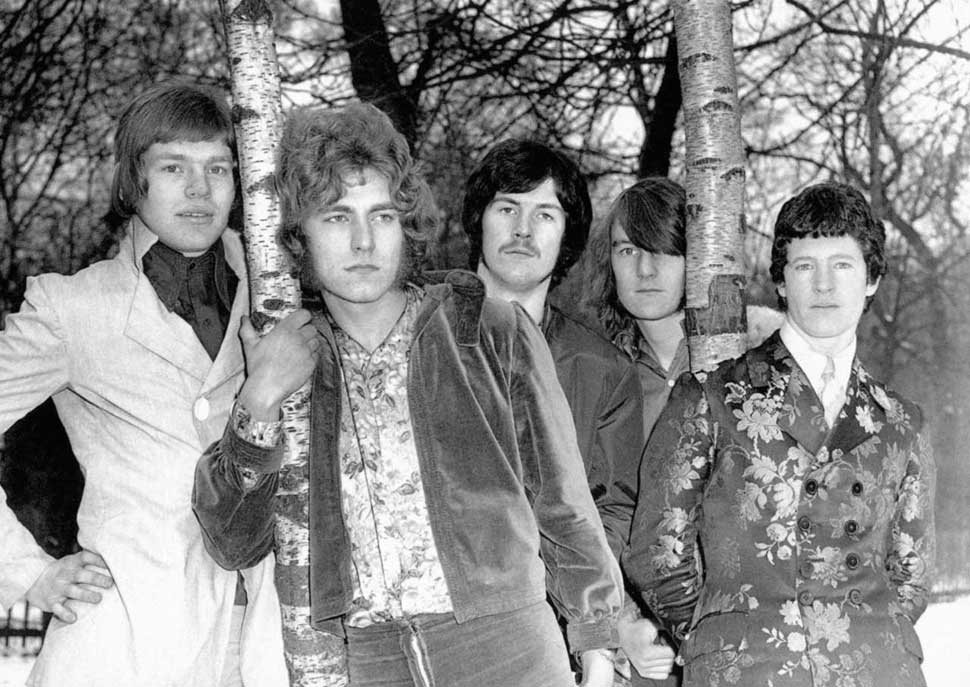
John Paul Jones meanwhile was still operating on the session treadmill, though increasingly specialising in conceptualising arrangements – “I discovered that musical arranging and general studio direction was much better than just sitting there and being told what to do.” But he was keen to embrace a fresh challenge.
Since their Beck’s Bolero collaboration, the musical paths of Page and Jones had crossed frequently. Most recently they’d worked together on Donovan’s Hurdy Gurdy Man album, but significantly, Jones had arranged the strings on The Yardbirds' Little Games single of 1967. The descending runs of the string section that complemented Page’s strident riffing were the first tentative steps toward a technique that the pair would latterly perfect with Led Zeppelin’s Kashmir. And so, as soon as Jones learned of Page’s plans to assemble a new Yardbirds’ line-up, he most enthusiastically offered his services.
“After a few years of sessions I’d began to tire of it all,” Jones admitted later, “I noticed a news story that Jimmy was forming a new group and saw it as a chance to be involved in something new at last.”
At the time of Jones’ initial proposition, Chris Dreja was still involved in The Yardbirds’ future plans, but within weeks the situation changed as the band’s longest-serving member ultimately elected to pursue a career in photography – he would later shoot the band portrait that adorns the back cover of Led Zeppelin’s eponymous debut collection. Directly after Dreja announced his decision to quit, Jimmy Page called John Paul Jones and offered him the job.
Interestingly, the former Cream bassist Jack Bruce also claims to have been first in the frame to replace Dreja: “I was asked to join Page’s band, but having come out of one intensive group situation, I decided it wasn’t for me.”
Contemporary rumour also had it that Bruce’s ex band mate Ginger Baker was similarly considered to fill The Yardbirds’ all too vacant drum-stool – an unsubstantiated piece of gossip it might have been, but someone had to fill the role, and when negotiations with former Jeff Beck and John Mayall sideman Aynsley Dunbar proved ultimately fruitless, Jimmy Page was all out of ideas. But it was at this crucial point that Robert Plant put forward the name of his old Band of Joy sparring partner, John Bonham.
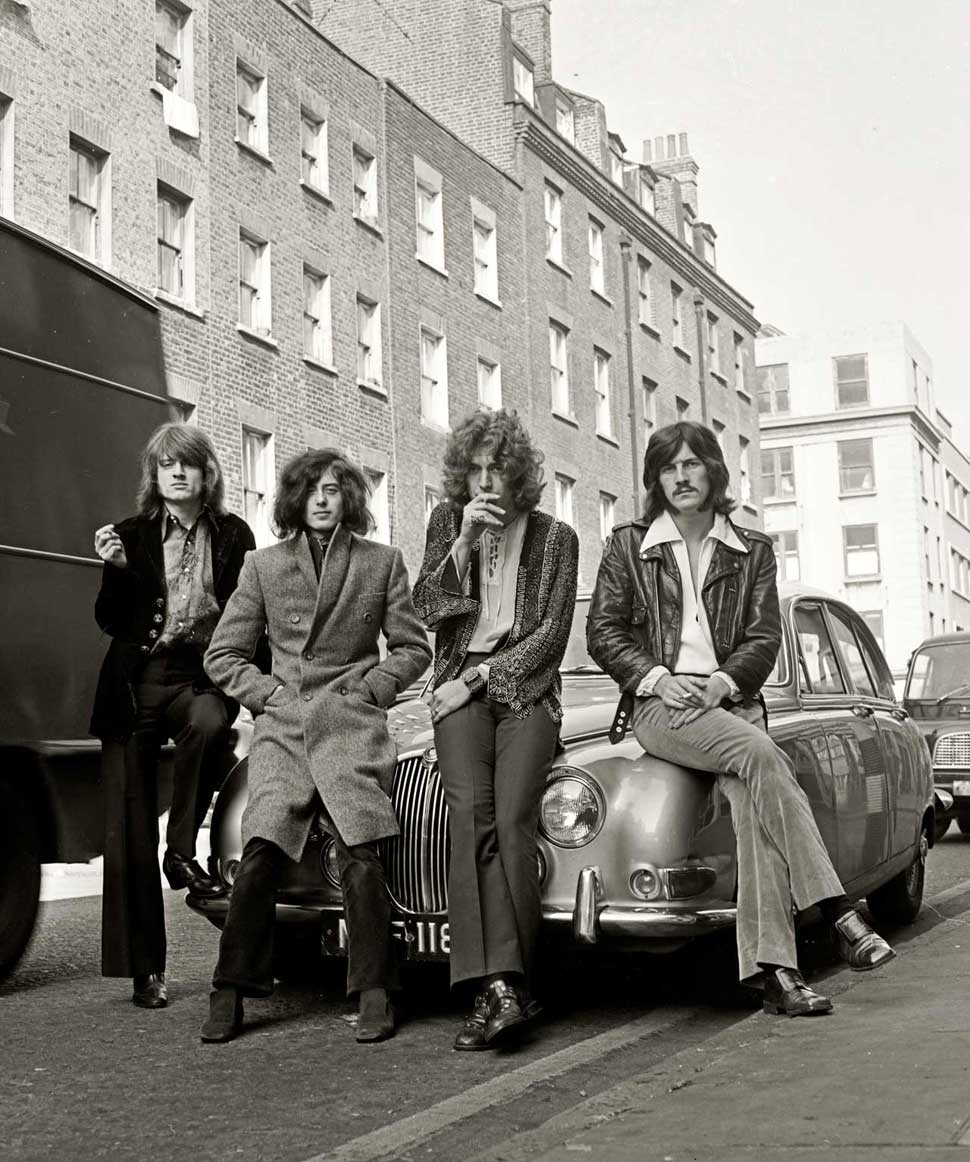
By now, Bonzo was fully ensconced with Tim Rose and enjoying the relative luxury of a regular weekly income of £40, he’d already rejected recent offers of employment with both Chris Farlowe and Joe Cocker, and was similarly reluctant to risk his new-found security by rejoining Plant in the unproven line-up of the ‘New’ Yardbirds. Page and Grant meanwhile, were entirely convinced of Bonham’s potential after checking out a Hampstead Tim Rose show in late July.
Following repeated telegrams from Peter Grant however, Bonham’s resolve began to weaken: “When I was asked to join The Yardbirds,” remembered the drummer later, “I thought they’d been forgotten in England. I knew Jimmy was a highly respected guitarist and Robert I’d known for years, so I thought that even if it didn’t really take off, it was a chance to play in a really good group.”
And so, gradually worn down and flattered by Page and Grant’s dogged persistence, Bonzo finally resigned his commission with Tim Rose and attended his first rehearsal with Page, Plant and Jones in London’s Gerrard Street on August 19, 1968.
The embryonic band first set to work on a spirited romp through Johnny Burnette’s The Train Kept A Rollin’ – a Page-era Yardbirds live staple – and in spite of John Paul Jones’ initial worries as to how he might appear to the younger, less experienced Midlands boys, the band’s chemistry was instant.
“I think they half expected to see me smoking a pipe and wearing slippers,” said Jones of his first encounter with Plant and Bonham. “They had heard about this session man and must have wondered what to expect. But once we started playing together we knew it was going to work.”
Within a few short weeks the revitalised Yardbirds line-up had cobbled together a full set that included an extensive reworking of Howlin’ Wolf’s How Many More Years as How Many More Times (that subsequently bore a Page/Jones/Bonham credit) and a brand new arrangement of the aforementioned Dazed And Confused.
Despite being attributed to Jimmy Page on its release, the true origin of the song can be traced to American singer-songwriter Jake Holmes. Legend has it that while out on tour in New York, Jim McCarty bought The Above Ground Sounds Of Jake Holmes’ and the album’s acoustic take on Dazed so impressed Page, that he took to inserting a heavily electrified arrangement of the song into The Yardbirds’ set, and by further perking up its central guitar workout with Eddie Phillips’ trademark violin bow, made it – for want of a more pertinent definition – his own.
It was not the last occasion where Page’s ‘New’ Yardbirds would ‘borrow’ arrangements, and in some cases, entire songs from their original sources. Jeff Beck was particularly displeased when he first heard Page’s arrangement of Willie Dixon’s You Shook Me – that eventually appeared on Led Zeppelin’s debut – an astonishingly similar version of which had just been released on Beck’s debut album, Truth.
“After (Page) heard Truth and saw us (The Jeff Beck Group, then featuring Rod Stewart, Ron Wood and Mick Waller),” recalls Beck, “he actually came to America with Mickie Most when we went there and he was hanging around an awful lot, staying at the same hotels and listening. When I first heard his demo of You Shook Me my heart just sank. I looked at him and ‘Jim? What?’ and the tears were coming out with anger. I thought ‘This is a piss-take, it’s got to be.’ I mean there’s Truth, still spinning on everybody’s turntables, and now this turkey’s come out with another version.”
Also retained from original Yardbirds’ days was Page’s White Summer virtuoso piece that he now took to merging with the newly conceived acoustic workout Black Mountain Side. I Can’t Quit You Baby, another Willie Dixon blues, was beefed up considerably, while the band’s first real ensemble composition came in the shape of the frenetic Communication Breakdown.
Although there was a clear and over-riding Yardbirds influence still at work in the band’s early choice of material, Plant’s slightly more esoteric tastes were reflected in the inclusion of a dramatically revamped Babe I’m Gonna Leave You, Garnett Mimms’ As Long As I Have You and – irrefutably wearing his affection for the American West Coast on his sleeve – Spirit’s Fresh Garbage.
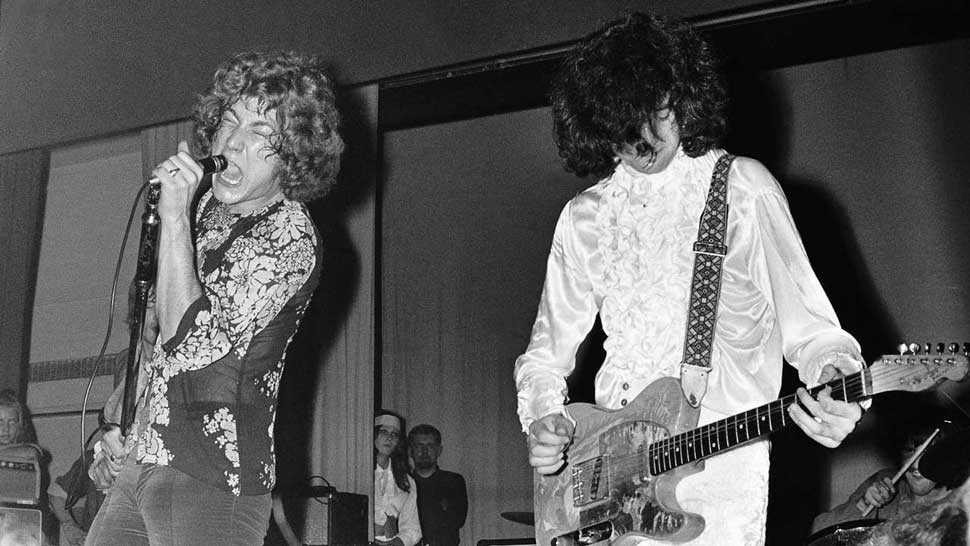
The radically remoulded ‘New’ Yardbirds made their live debut at the Teen Club in the town of Gladsaxe in Denmark on September 7, 1968. The date marked two months to the day since Relf, McCarty and Dreja’s forgettable Luton College of Technology swansong. “Standing by the side of the stage it was obvious that there was a special chemistry,” said Peter Grant. While Plant latterly observed: “I was very green and it was a tentative start, but we knew we had something.”
One thing that rapidly became clear was that the band’s current incarnation was working under an exceptionally misleading name. “We realised we were working under false pretences,” Page admitted, “the thing had quickly gone beyond where The Yardbirds had left off.
We all agreed that there was no point in retaining the Yardbirds tag, so when we got back from Scandinavia we decided to change the name. It was a fresh beginning for us all.”
But deciding on a new moniker would not be easy. After rejecting such preposterous throwaway names as Mad Dogs and Whoopie Cushion, Page recalled Keith Moon’s lead balloon comment from the ‘Beck’s Bolero’ sessions and ran it past Peter Grant who immediately recognised its potential.
“Moon’s joke about going down like a lead Zeppelin,” Grant recalled, “in the circumstances, the name seemed perfect. I got rid of the ‘A’. I was doodling in the office and it just looked better and I also didn’t want any confusion over the pronunciation in America.”
With that obstacle overcome, the newly christened quartet embarked on an introductory series of onenight gigs to home audiences in October, but the nuts and bolts of their passage from the nomenclature of The Yardbirds to Led Zeppelin has been somewhat confused over time.
While it’s been previously reported that the band’s final performance under the Yardbirds banner took place at Liverpool University on October 19 and that they made their debut as Led Zeppelin at Surrey University’s Great Hall on October 25, a recently unearthed poster from the Surrey show promises an appearance from the ‘New Yardbirds featuring Jimmy Page’. However, this gig was most definitely to be the final hurrah of the old moniker, with the band exclusively presented as Led Zeppelin from November onwards.
Even at this early juncture the material for Led Zeppelin’s groundbreaking eponymous debut album was already in the can. Recorded at London’s Olympic Studios, in less than 30 hours over the course of three weeks in late September and early October, it cost just £1,782. Jimmy Page utilised his extensive studio experience at the production helm and, according to the guitarist, progress was quite astonishingly swift: “We’d begun developing the arrangements on the Scandinavian tour,” Page remembers, “I knew what I was looking for and it came together very quickly.
“Ultimately I wanted the group to be a marriage of blues, hard rock and acoustic music with heavy choruses, a combination that hadn’t really been explored fully before: lots of light and shade in the music. As for the sound, I’d learnt a lot during the session days about distance micing and had also developed techniques like the use of backwards echo and reverb.”
Meanwhile, away from the electricity that was happening in the studio, the establishment of Led Zeppelin as a working unit had happened with such head-spinning rapidity that several of the group’s members were left with a number of outstanding extra-curricular commitments that they needed to take care of.
During the final days of The Yardbirds, Page had taken time out from the band in order to appear on former Sheffield gas-fitter Joe Cocker’s visceral assault on The Beatles’ With A Little Help From My Friends, which reached number one in the UK that autumn, whilst enjoying blanket radio ubiquity.
As for Robert Plant, he’d recorded a recent session with Alexis Korner at De Lane Lea studios that yielded the track Steal Away (the nagging, titular refrain of which the singer would latterly employ as an ad-lib during Zeppelin’s How Many More Times). Plant also honoured an appointment to do a BBC World Service radio session with Korner on October 10, the selfsame day that he recorded Tribute To Bert Berns with Zeppelin – an Olympic Studios out-take that finally saw the light of day as Baby Come On Home on 1993’s Boxed Set Two collection.
The ever in demand John Paul Jones, meanwhile, had an outstanding session with flamboyant 60s trouser-splitter – and future Elvis – The Musical star – PJ Proby to attend to. “I asked if I could bring my new colleagues along,” recalls Jones, “so Jimmy and Bonzo jammed along, and Robert put in some harmonica. It took place during our first rehearsals together, and was actually the first time we got together in a recording studio.”
The tracks in question – Mery Hoppkins Never Had Days Like These (a rather loosely jammed spoof on Mary Hopkin’s contemporary number one hit single Those Were The Days that ended up appearing on the b-side of Proby’s The Day Lorraine Came Down single) and Jim’s Blues (from PJ’s Three Week Hero album) – were both issued prior to Zeppelin’s debut album, and marked the first officially released evidence of the nascent ensemble in action.
In November 1968 Grant and Page travelled to New York in order to discuss a potential deal for Led Zeppelin with the giant Atlantic Recording Corporation. Despite the fact that The Yardbirds’ former paymasters (EMI in the UK and Epic in the US) felt that they would retain rights to the newly formed outfit, Grant was unhappy with the demands of both, and further heated negotiations with the Pye label had similarly failed to bear fruit.
Atlantic had built an impressive reputation as the home of such legendary soul and R&B artists as Wilson Pickett, Ray Charles, Aretha Franklin and Otis Redding whilst dabbling concurrently in the white rock market (with Vanilla Fudge and Cream) under the auspices of their subsidiary imprint, Atco.
Atlantic’s senior executives, Ahmet Ertegun and Jerry Wexler, recognised Led Zeppelin’s potential immediately. Page and Jones came well recommended to them with a reputation for being consummate studio professionals reiterated by not only Dusty Springfield (then riding high on the success of her defining In Memphis album), but also legendary soul producer Bert Berns.
Thus, purely on the strength of his charges’ dazzling reputations and a set of their utterly earscorching master tapes, but without Ertegun or Wexler ever seeing them play live, Peter Grant succeeded in signing Led Zeppelin to a five-year contract that came complete with an unprecedented advance payment of $200,000. Furthermore, he insisted that various clauses were written into the contract to guarantee Zeppelin far greater artistic control than any other Atlantic act.
Having secured this lucrative deal, Grant was swiftly returned to earth by the muted response that was accorded the band’s genesis back in Blighty.
“Before the album was released here, it was a joke in England,” Grant admitted, “They just didn’t want to know. I’d already set my sights on America, because I figured we’d be given a fair chance.” Mass acceptance would follow at home, but only when rave notices began filtering back from Led Zeppelin’s breakthrough American dates of 1969.
Also evident in the band’s early days was the stark divide between the more experienced Jones and Page and the relatively fresh-faced Bonham and Plant.
“Looking back it’s remarkable how naive Bonzo and Robert were at first,” Grant latterly acknowledged. “Bonzo even offered to drive the van for an extra 50 quid a week. But once we got to America, their eyes were opened and the fun began.”
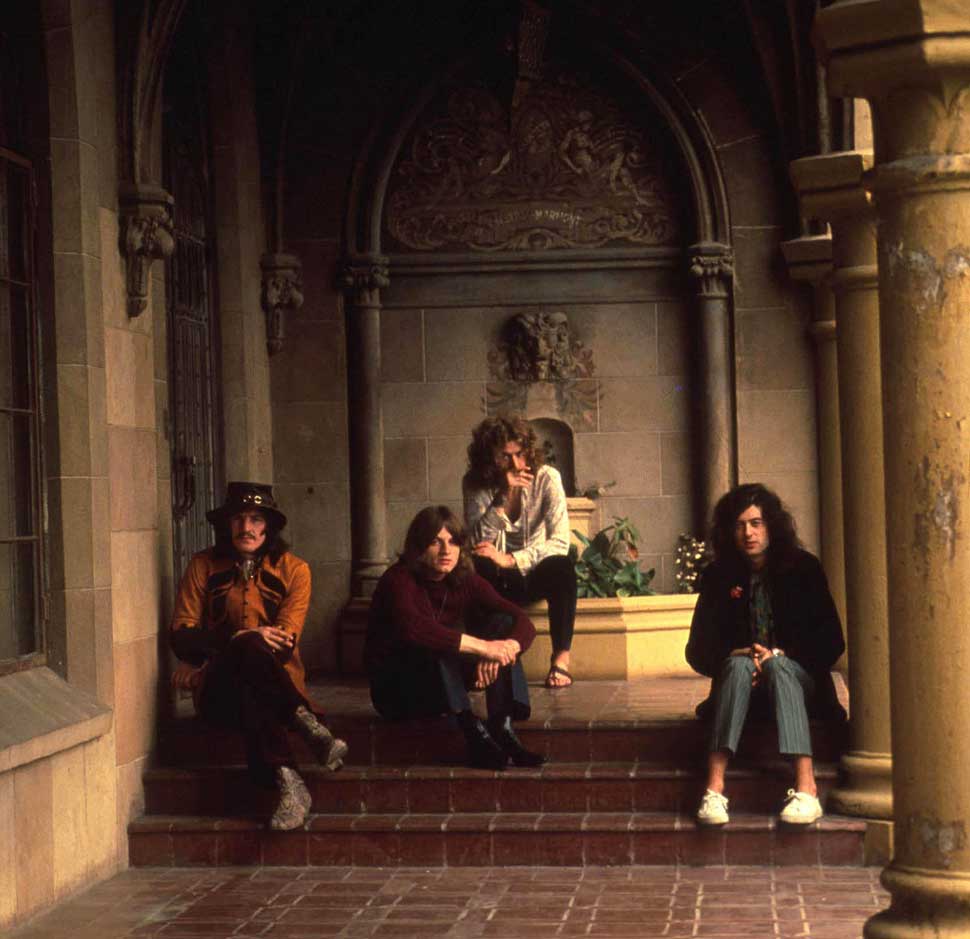
For all Robert Plant’s later embracing of self-assured rock god narcissism, he was clearly overshadowed by Page’s quite daunting reputation as the band gradually found their feet. Grant would hide bad reviews from the singer on the band’s early tours, well aware of how badly they could undermine his confidence, while even road manager Richard Cole was not averse to ordering him around. But, once he had a couple of barnstorming US tours under his belt, ‘Percy’ Plant swiftly developed a staggering degree of bravado and swagger that irrefutably enhanced Led Zeppelin’s rapidly burgeoning appeal.
It was in America that Led Zeppelin first struck gold, and they did so with incredible haste. The band initially left for the New World (to Plant and Bonham at least, as it marked the first Stateside trip for both) on Boxing Day, 1968, and a tour support slot with Vanilla Fudge and Iron Butterfly immediately afforded the band an opportunity to shine.
It was Page’s reputation with The Yardbirds that initially drew the crowds, but the band soon established themselves on their own merits in the direct wake of show-stopping performances on both coasts at promoter Bill Graham’s prestigious Fillmore East in New York and Fillmore West in San Francisco. Another contributory factor to their brisk rise was the shrewd distribution of a few hundred advance copies of their debut album to key reviewers and FM stations across the country.
Advance orders soon topped 50,000 for the band’s eponymous debut, which is now universally known as Led Zeppelin I, as it hit American record stores on January 2, 1969. Although it first entered the Billboard chart at a lowly 99 position, by the time it was released in the UK in March that year, the album had firmly established itself in the US top ten. It’s unsurprising then that similar success was to follow at home on May 10 when it peaked at number six. A decision not to release singles meanwhile (at Grant’s insistence, incidentally) only helped to intensify public demand for the album.
Speaking retrospectively of Led Zeppelin I John Paul Jones has reflected that: “There just wasn’t anything like it at that time. Jimmy’s production was very innovative. And when Robert roared in, the initial reaction from people was always ‘where did you find him from?’
“His vocal approach was fantastic. And John Bonham’s musical knowledge made it so interesting for me. He admired such diverse styles. Everything from Ringo’s fills on Beatles singles to James Brown and Motown rhythm sections. That sort of influence made it a great group to be in. After all those sessions, from the first moment I played with Bonzo in Zeppelin I knew I’d finally come home.”
In a little over six months, with the help of three relatively unknown musicians, Jimmy Page had negotiated a phoenix-like metamorphosis for the band that was formerly known as The Yardbirds. From the provincial backwaters of the Black Country, via murky London recording studios, by way of some obscure American ballrooms, the transformation was now complete.
Led Zeppelin were fully primed for a remarkable 12-year flight that would ultimately see them alter the course of rock music, pushing it towards totally new areas of titanic, sonic majesty.







